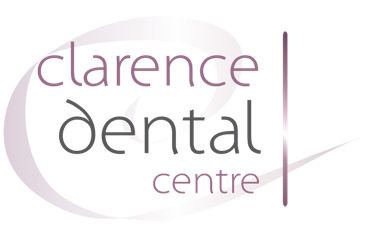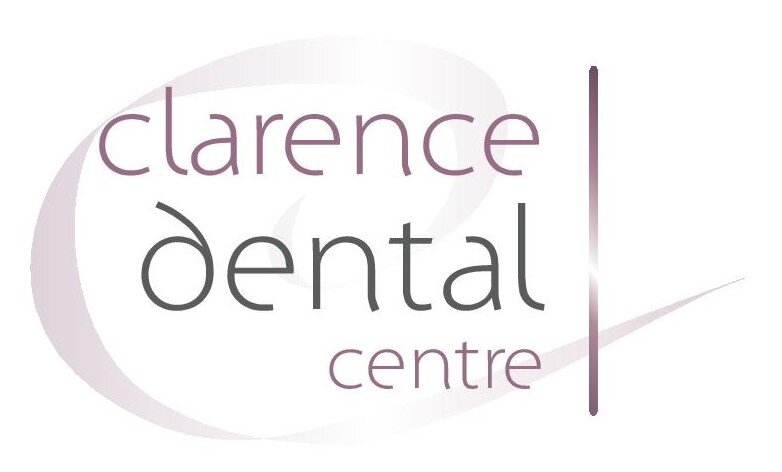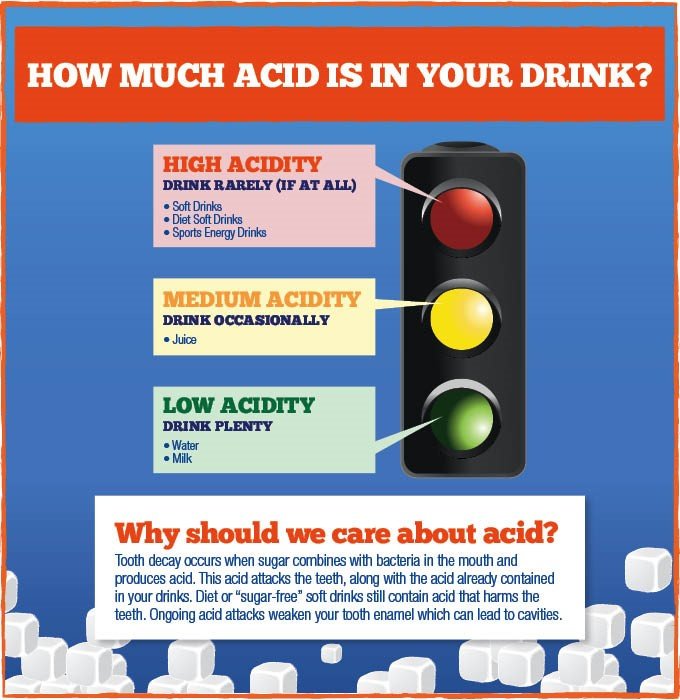The Down Low on Acid
A common message from dental professionals is to avoid sugary foods and drinks for the sake of our oral health – and rightly so. Sugar is definitely the enemy #1 for your teeth. A lesser acknowledged adversary however is acid.
Acidic foods and drinks have the potential to wreak havoc on the health of your teeth. Here we outline what to look out for and what you can do to protect your teeth from permanent damage caused by acid erosion and the associated tooth sensitivity.
The main offenders
When acidic foods and drinks make up a significant portion of the diet, or are consumed regularly, the potential for damage increases. When we talk about acidic foods and drinks, the biggest offenders to look out for include:
Salad dressings high in vinegar or lemon juice
High fruit consumption, even more pronounced in high acid fruits such as citrus and pineapple – in the form of both whole fruit and fruit juices. This includes lemon in your drinking water.
Carbonated drinks including ‘diet’ or artificially sweetened softdrinks and energy drinks
Sports drinks – these are particularly damaging when used while participating in sports, when the mouth is dry.
So how does acid cause damage?
While good quality saliva is protective to the teeth, exposure to acidic foods and drinks reduces the pH in the mouth, leaving your saliva acidic. This can lead to a number of outcomes:
An acidic environment in which the bacteria in plaque thrive. This bacteria is then primed to cause tooth decay.
Erosion of the tooth enamel, leading to exposed dentine which transmits pain through to the nerve of the tooth when exposed to sweet, hot and cold foods and drinks.
What can I do to protect my teeth from damage?
Prevention is always better than a cure, so avoiding or at least reducing acidic foods and drinks is number 1. When you do eat or drink something acidic, you can reduce the risk of damage by:
Using a straw when drinking acidic drinks
Rinsing your mouth with water after exposure
Waiting an hour after eating and drinking the acidic food or drink. This is important, as the acid weakens the tooth enamel, and brushing your teeth immediately will actually exacerbate the problem, brushing away a layer of softened enamel.
Using a fluoride toothpaste and, if you are exposed to a lot of acid, adding in an additional product like a higher fluoride toothpaste, fluoride mouth wash or Tooth Mousse Plus. You can also try rubbing a smear of sensitive toothpaste on the affected area and leaving it there to be absorbed.
Brush your teeth thoroughly but gently, using a soft toothbrush and a motion of small circles, rather than a heavy handed scrubbing action.
But the damage is already done! What should I do?
Unfortunately, once the enamel has been lost from the tooth, there is no getting it back. In addition to the above topical treatments, the dentist may need to apply some varnish in-office to a sensitive tooth, or add some filling material to act as permanent coverings to prevent exposure to stimuli.
As always, regular visits with your dentist are important in keeping on top of your oral health, and for the opportunity for your dentist to provide you with diet advice and oral hygiene instruction before a problem takes hold.
Learn more at Rethink Sugary Drink.


